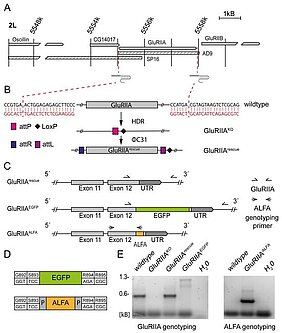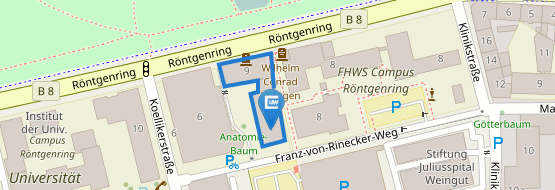Versatile Endogenous Editing of GluRIIA in Drosophila melanogaster
10.02.2024Versatile Endogenous Editing of GluRIIA in Drosophila melanogaster
Constantin J. Beckers, Achmed Mrestani, Fabian Komma, Sven Dannhäuser (2024)
Cells 2024, 13, 323.doi.org/10.3390/cells13040323
Glutamate receptors at the postsynaptic side translate neurotransmitter release from presynapses into postsynaptic excitation. They play a role in many forms of synaptic plasticity, e.g., homeostatic scaling of the receptor field, activity-dependent synaptic plasticity and the induction of presynaptic homeostatic potentiation (PHP). The latter process has been extensively studied at Drosophila melanogaster neuromuscular junctions (NMJs). The genetic removal of the glutamate receptor subunit IIA (GluRIIA) leads to an induction of PHP at the synapse. So far, mostly imprecise knockouts of the GluRIIA gene have been utilized. Furthermore, mutated and tagged versions of GluRIIA have been examined in the past, but most of these constructs were not expressed under endogenous regulatory control or involved the mentioned imprecise GluRIIA knockouts. We performed CRISPR/Cas9-assisted gene editing at the endogenous locus of GluRIIA. This enabled the investigation of the endogenous expression pattern of GluRIIA using tagged constructs with an EGFP and an ALFA tag for super-resolution immunofluorescence imaging, including structured illumination microscopy (SIM) and direct stochastic optical reconstruction microscopy (dSTORM). All GluRIIA constructs exhibited full functionality and PHP could be induced by philanthotoxin at control levels. By applying hierarchical clustering algorithms to analyze the dSTORM data, we detected postsynaptic receptor cluster areas of ~0.15 µm2. Consequently, our constructs are suitable for ultrastructural analyses of GluRIIA.


